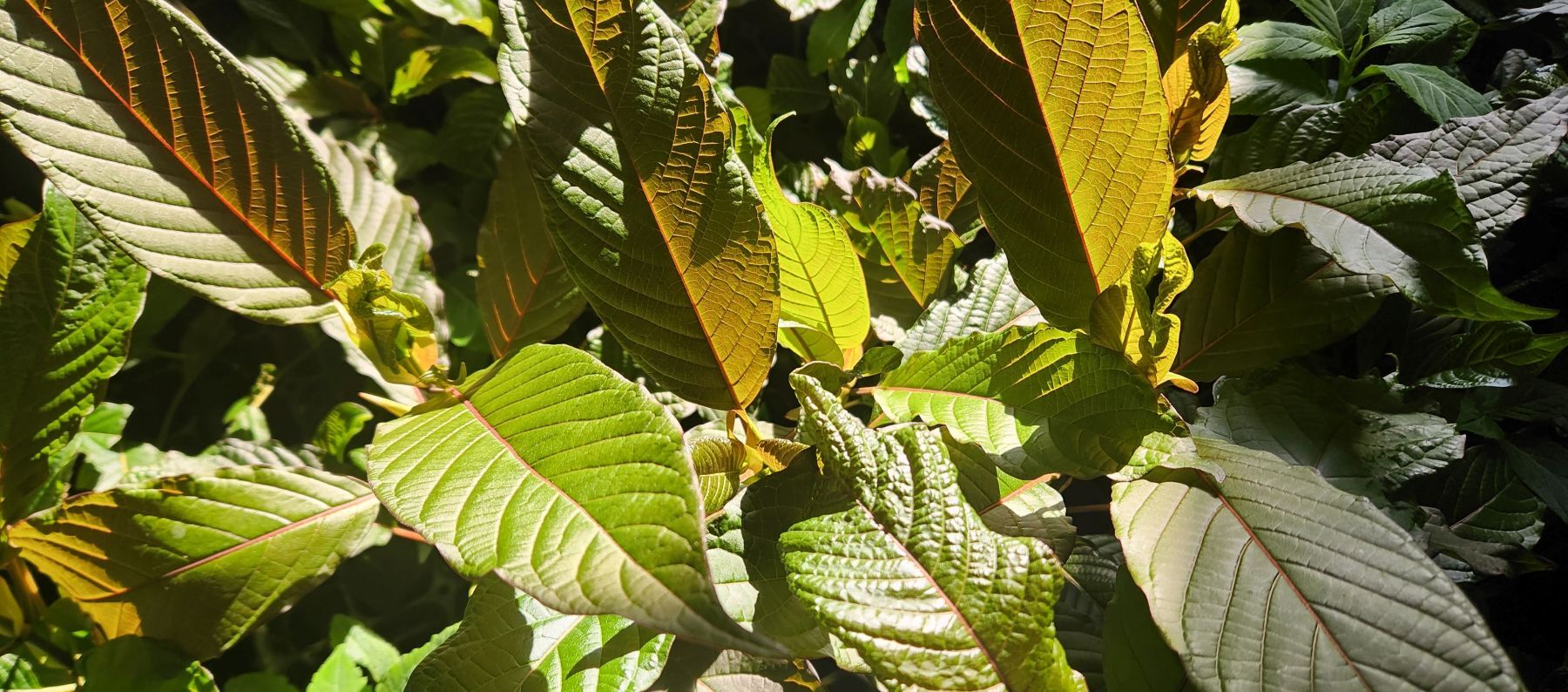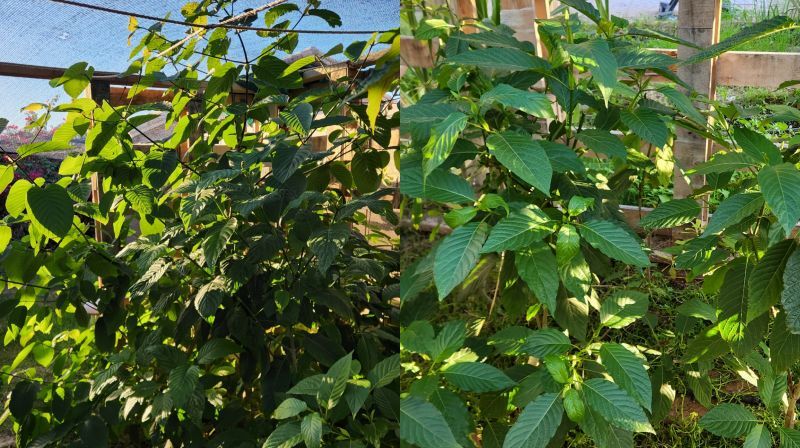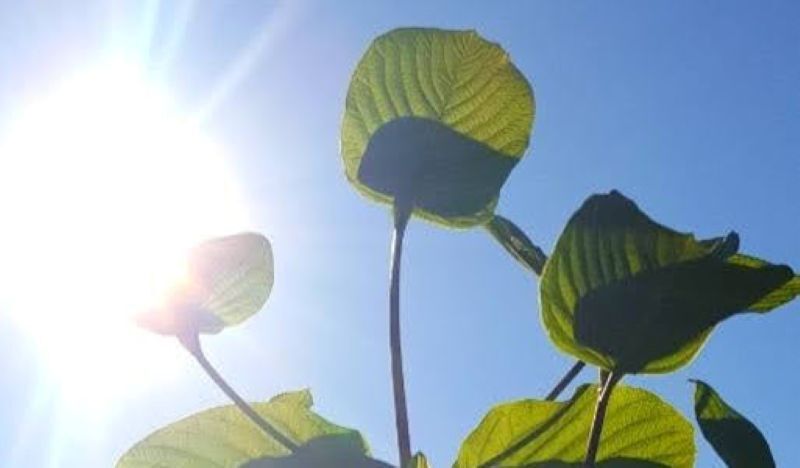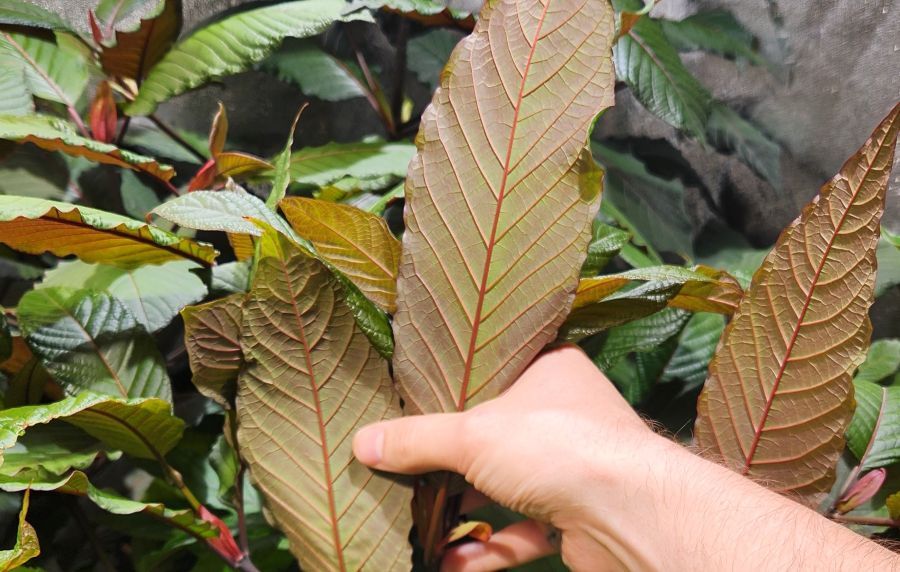How to Grow Kratom Plants (Mitragyna speciosa)

Kratom (Mitragyna speciosa) is a fast-growing tropical tree native to Southeast Asia. Environmental and care factors can influence plant growth and the accumulation of alkaloids, which are secondary metabolites found in the leaves. Understanding these factors provides insight into cultivating healthy, high-quality specimens.
Acclimating Your New Kratom Plant
Newly shipped kratom plants experience stress during transit from the changes in humidity, air flow, temperature, and light. Gradual acclimation to its new environment is necessary to reduce plant shock and support future healthy growth. For a guide on plant acclimation, please visit caring for your new plants upon arrival
Humidity

Kratom thrives in high-humidity tropical environments, but it can also grow well in modest to low humidity levels once acclimated. When growing kratom in lower humidity environments, it is important they stay well watered. Stable moisture availability supports consistent leaf development, while prolonged drought stress may negatively affect plant quality.
Temperature
Consistent warm temperatures help maintain healthy growth and higher secondary metabolite accumulation. While optimal growth at roughly 80–90°F (27–32°C), kratom tolerates a wider range from the low 70s to well above 100 degrees and still maintains active growth. Prolonged cold (between 70 degrees and close to freezing) can slow growth and induce dormancy. While kratom can handle a bit of chilly weather, it is important that it's not exposed to freezing temperatures or it may die.
Lighting

Kratom thrives under intense lighting conditions, which can enhance leaf quality and alkaloid production. Research indicates that higher light intensity, especially when combined with adequate humidity and/or irrigation, can increase the synthesis of key alkaloids such as mitragynine and total alkaloid content per leaf dry mass. This suggests that providing kratom plants with sufficient light can positively impact leaf chemical quality (Horticulturae, 2025).
It is important to note that kratom can handle intense lighting without stress. High heat and low soil moisture are more likely to cause plant stress than light intensity. Ensuring adequate watering and temperature control supports optimal growth and alkaloid accumulation.
Soil
Kratom prefers nutrient-rich soil with high organic matter and slightly acidic pH (5.5–6.5). Healthy soil supports robust growth and leaf development, which indirectly influences the plant’s secondary metabolite production.
Watering
Consistent soil moisture is important. Under-watering can stress the plant and may affect leaf chemistry. Ensuring stable water availability helps maintain healthy foliage and supports overall plant metabolism. When it comes to soil moisture levels it cant be stated enough that kratom likes lots of water and its hard to over do it.
Fertilization
While a general all-purpose plant fertilizer (such as 5-5-5 N-P-K) works well and is preferred for establishing young root systems early on, it’s better to use a fertilizer geared toward vegetative growth once the plants are large enough to begin focusing more on leaf development—fish emulsion works quite well. As a side note, specific nutrient correlations have been observed; for example, studies suggest that increased calcium availability may be associated with higher mitragynine concentrations in the leaves (PMC, 2022).
Other Factors Affecting Leaf Chemistry

- leaf age: Alkaloid profiles vary with leaf maturity, with older leaves often accumulating different compounds than younger leaves. please check out kratom harvesting practices for more information.
- Genetics: Different clones and phenotypes naturally vary in alkaloid composition, independent of care. Selecting high-quality genetics is necessary for high quality results.
Key Takeaways for growing High-Quality Kratom Plants
- Maintain warm, stable temperatures consistent with tropical environments.
- Provide consistent moisture and nutrient availability to support healthy growth.
- Use good lighting to optimize leaf growth and chemical content.
- Minimize extreme stress during acclamation.
- Recognize that plant genetics and leaf age influence alkaloid content.
Learn More
Explore our live kratom plants or visit our main Kratom page for additional educational content on Mitragyna speciosa.
